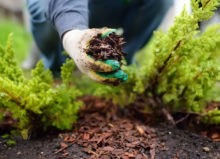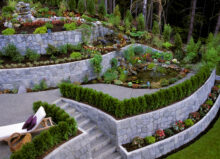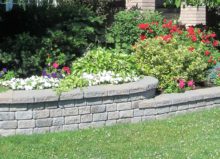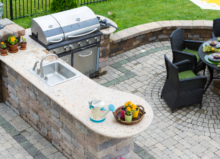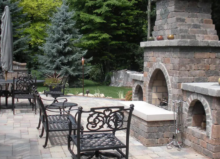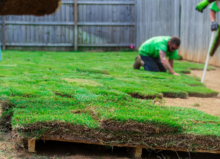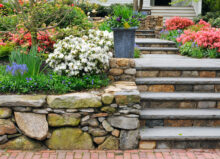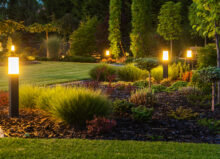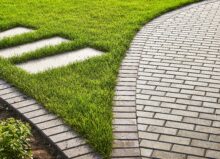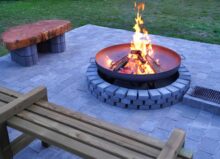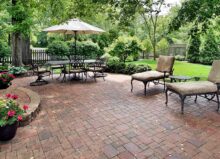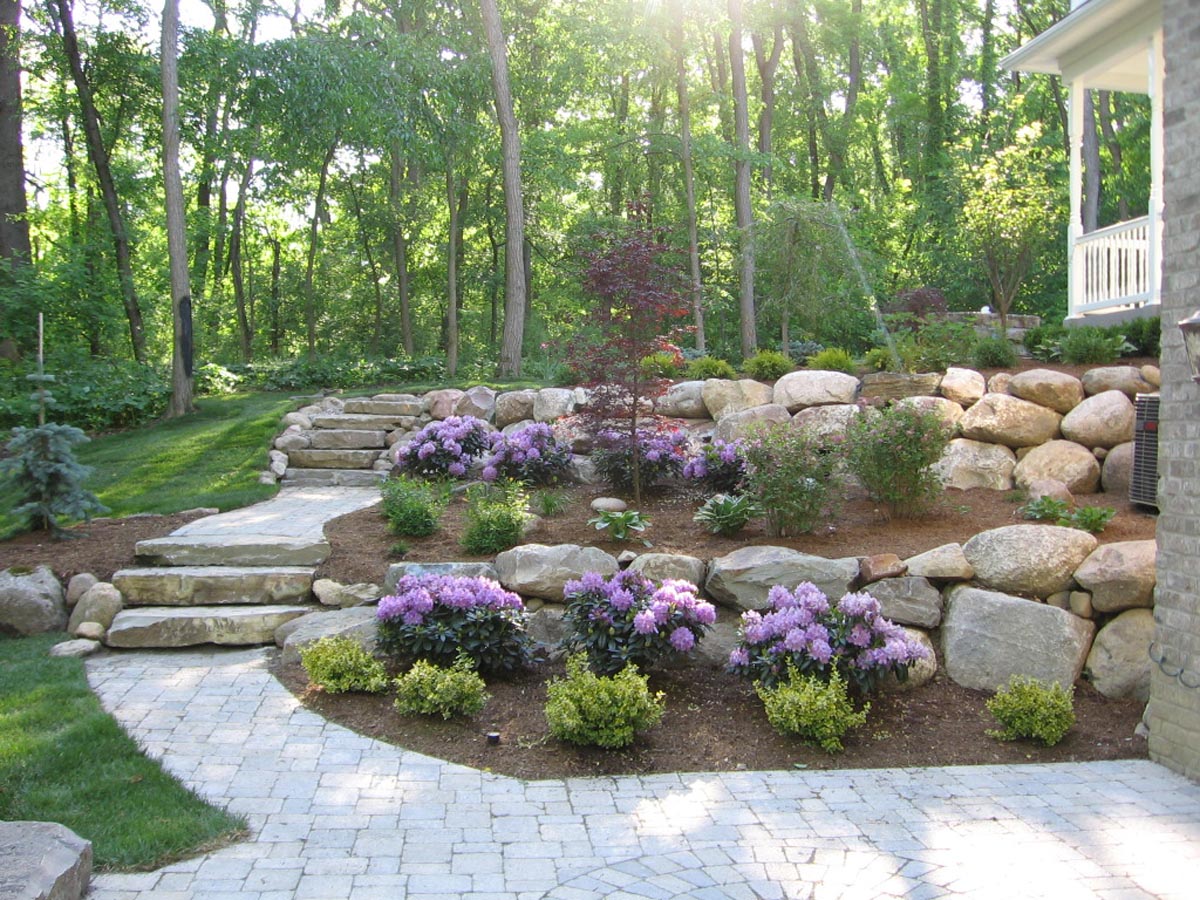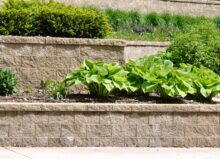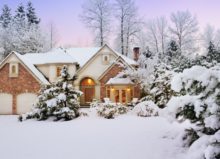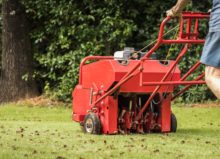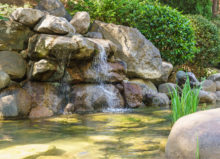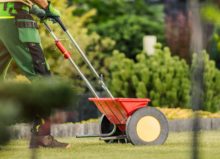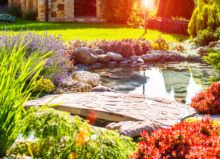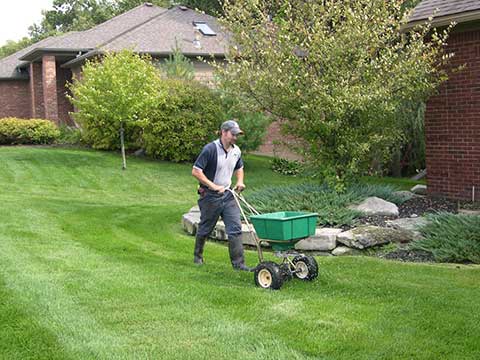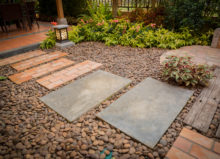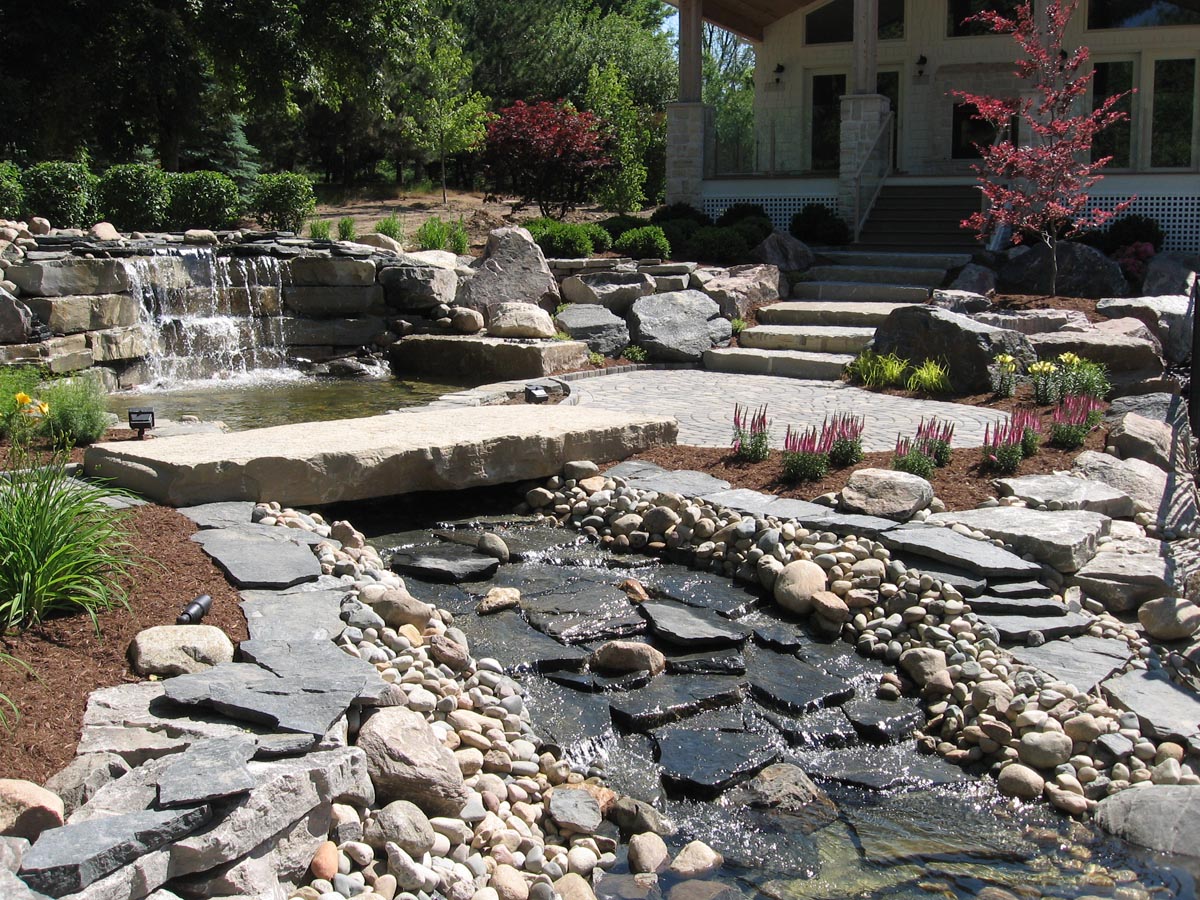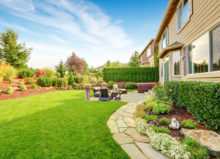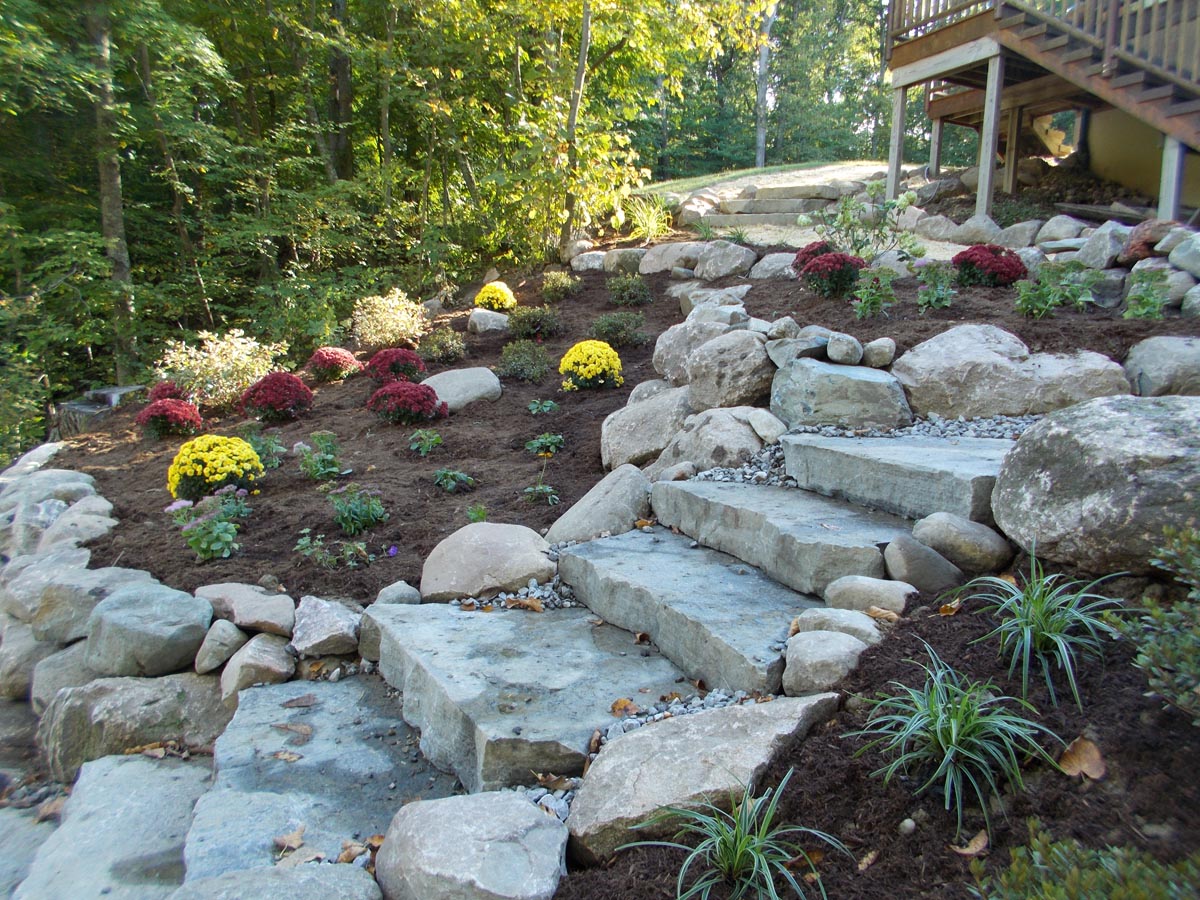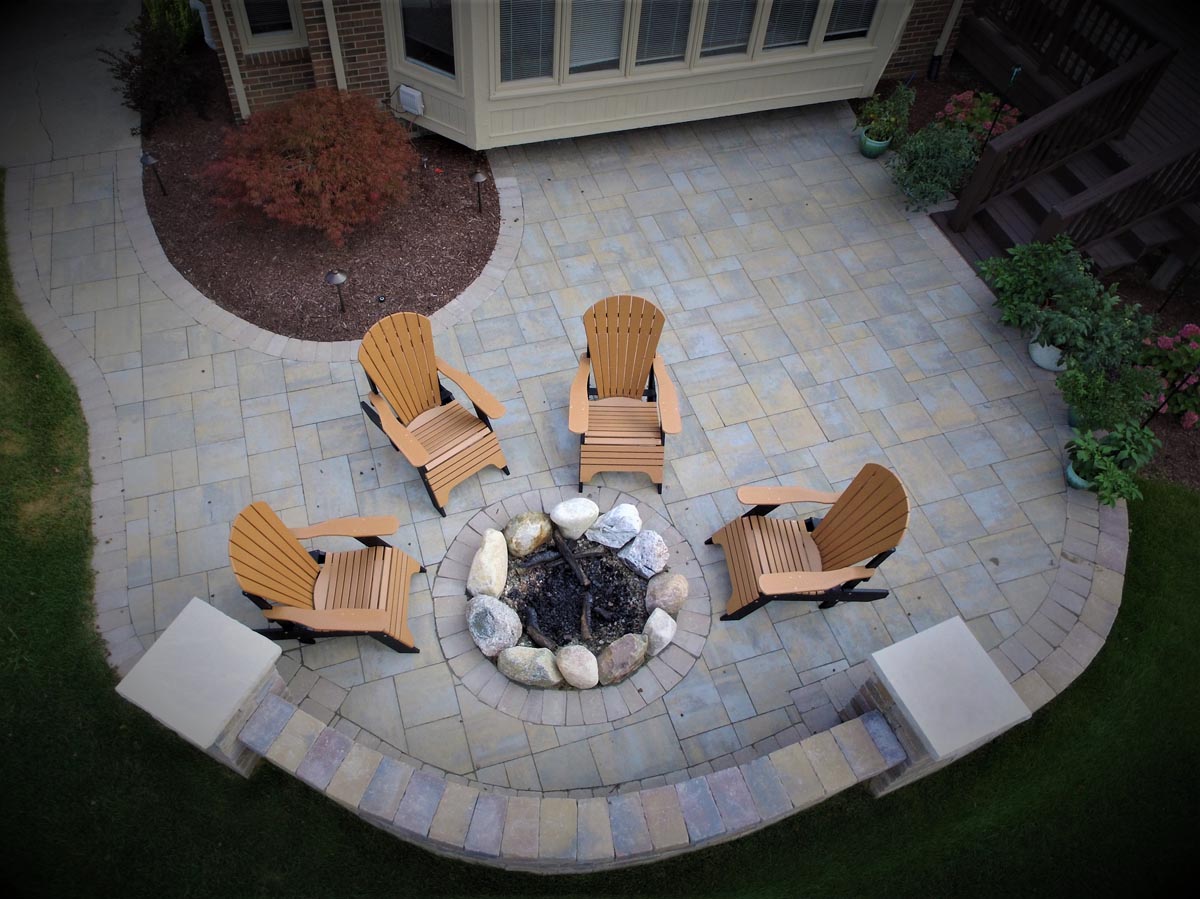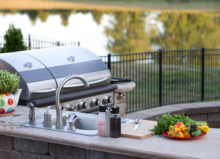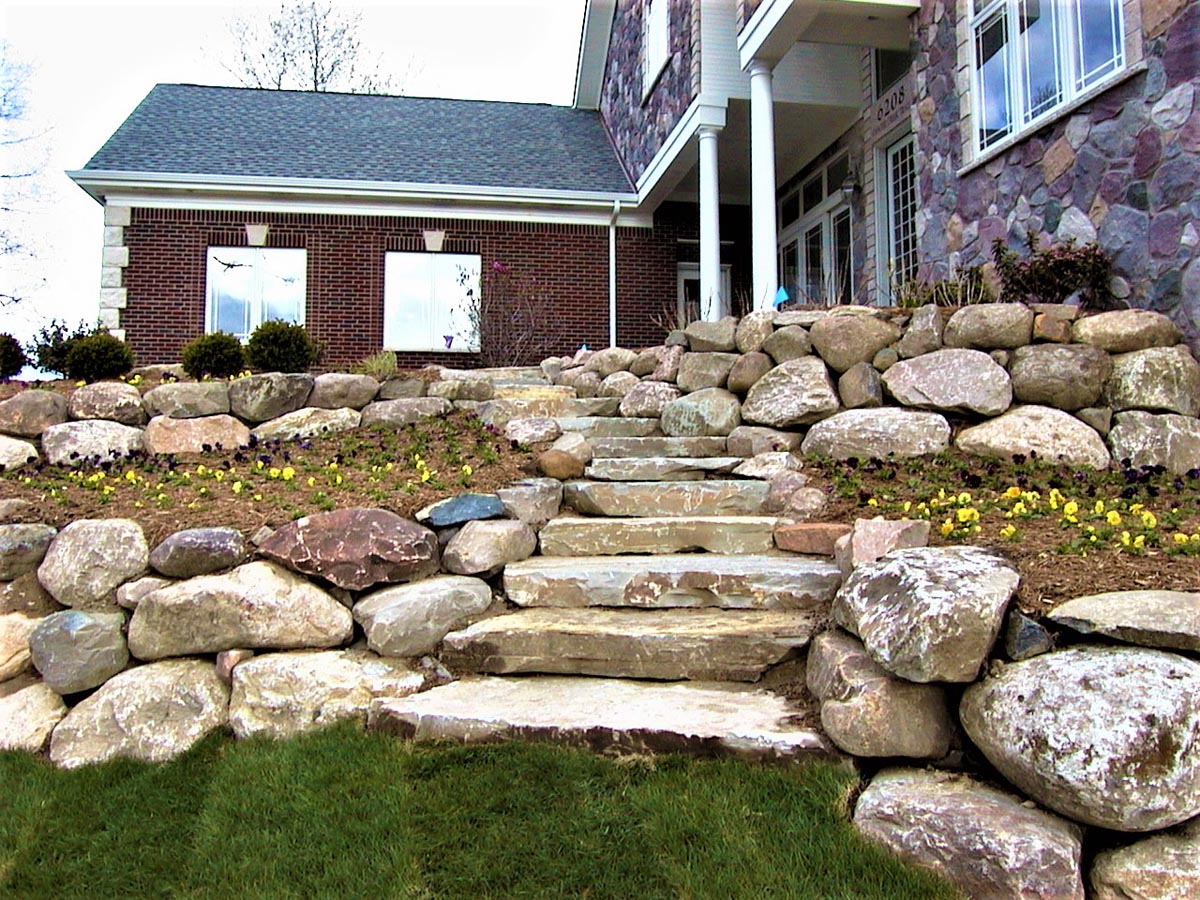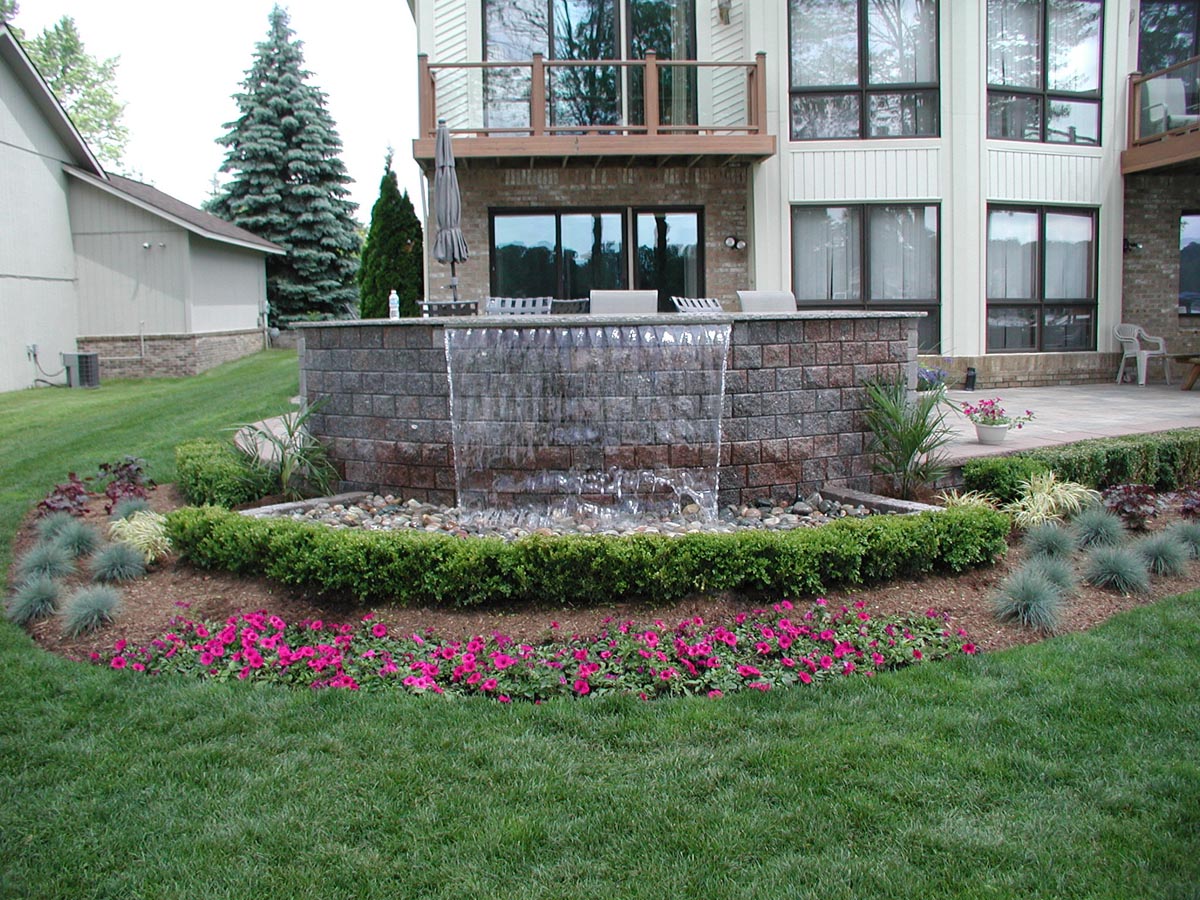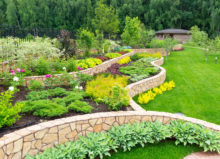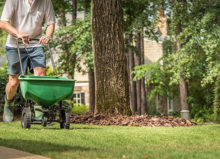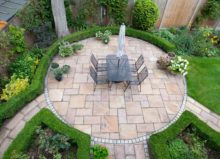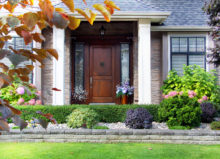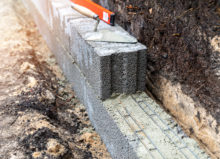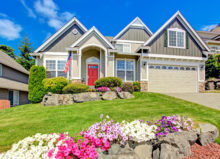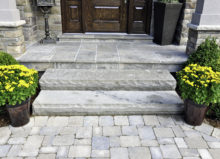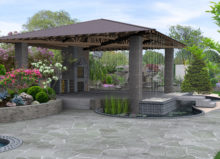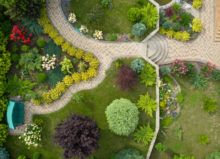Creating Depth by Layering Plants and Hardscape Features
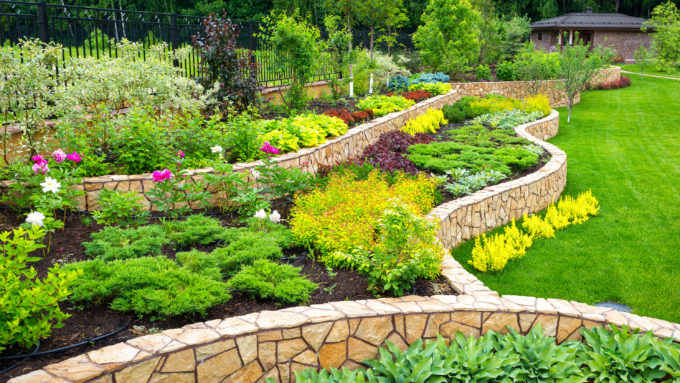
Creating Depth by Layering Plants and Hardscape Features
Creating a beautiful garden is no small task, but it isn’t as tricky as it sounds. Landscape layering, which encourages gardeners to mix and match plants strategically to produce an organic layout, is a simple design principle that helps amateur landscapers achieve their dream scenery. If you’re in need of premium landscaping services, learn more about us here!
How To Create Depth by Layering Plants
If you want to develop a landscape that looks kept but authentic, depth is the key to success. Plant larger greenery, such as trees and shrubs, first. Tall plants draw the eyes upward and create the top layer of scenery. Next, plant medium-sized flowers and vines to form the landscape’s middle layer. Finally, small herbs and bulbs make up the eye-catching ground layer of greenery.
Together, this mix of plant styles and sizes gives landscapes their dynamic appearance. It guides the eyes to different heights and features of the area, all while creating natural landscaping borders. Its visibility ensures that the garden is also easy to maintain, as a glimpse can usually tell you what needs attention.
How Layering Makes Landscapes Spectacular
Basic theories of design apply as much to your property outside as inside your home.
Depth and Scale
Layering plants works for the same reason that layering other decorative pieces works: Creating depth by layering objects is a core design principle, regardless of the setting. Varying the heights, shapes, and textures of design elements gives scenes a more organic appearance and keep objects from competing for visual attention. It also forces designers to consider scale when developing a plan, which is as vital outdoors as indoors.
Repetition
Repetition is another fundamental decorative practice that applies to landscaping. It adds unity to the garden and highlights specific paths, features, or sections of the area. Repeat particular plants for a cleaner look, or copy plant types, sizes, colors, and textures for additional visual impact.
Flow
Rather than placing elements in random spots throughout your lawn, connect your plants, garden beds, and features. This structure creates a flow that welcomes you, your family, and your guests into the space. Group elements together, cozying your plants around the house and spreading out from there. This cozy setup makes it look like your house is tucked away into your garden, giving the home a warmer, more inviting presence.
How To Choose Hardscape Features
Once you have plants under control, you can switch your focus to hardscaping, or landscaping for manufactured lawn features. Though many choose to prioritize plants, hardscaping is ideal for those who need to establish pathways or want to add a fire or water feature to their garden. For information about choosing the right gravel and landscaping rock, read our buyer’s guide!
Budget
Before planning your hardscape installation, decide how much money you plan to spend on the project. Hardscaping prices vary dramatically, as paving a small walkway is much less work, and less money, than building an expansive outdoor kitchen and dining area. Using high-end materials also leads to a higher price tag, so consider prioritizing upgrades if money becomes an issue.
Functionality
If your hardscaping plans don’t incorporate the existing space and its future uses, your features could inhibit the functionality of your outdoor living area. Any homeowner with water features, for example, should avoid slippery walkway materials to maintain safety. On the other hand, fire features shouldn’t nestle too close to buildings or greenery, as this can create a fire hazard. Aesthetics are essential, but not at the expense of functionality.
Summary
A picture-perfect landscape displays layered plants, with engaging repetition and flow and hardscaping that doesn’t hinder the area’s natural design. Whether you’re a landscape layering expert or an amateur gardener, Design One is here to help you with all your landscaping and hardscaping needs. For information about why you should hire a lawn care professional, read our blog here!
As a residential and commercial landscaping company in Michigan, we’re experienced in both property care and landscaping design. With over 40 years of experience in the industry, Design One is great source of information when it comes to your Michigan lawn care needs! From preliminary design mapping, to irrigation and the types of plants you might want on your priority, we cover it all.

